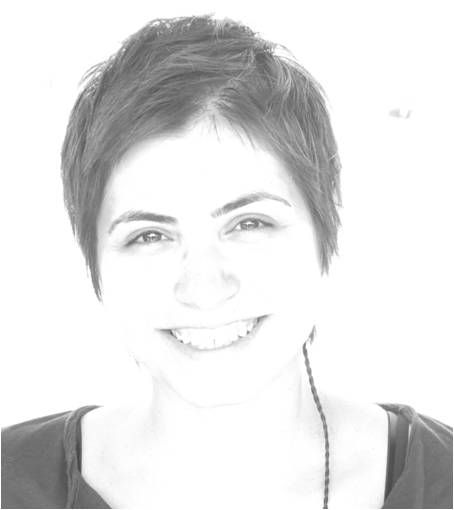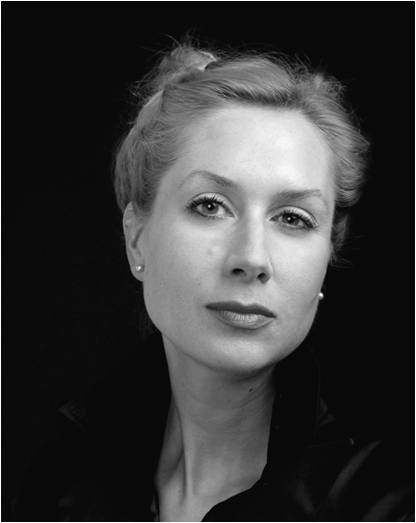 Andrea Rossi
Andrea Rossi
He is an architectural researcher based in Vienna, where he is developing research on robotic fabrication at Coop Himmelb(l)au. He is founder of Temporary Autonomous Architecture, a research and design practice involved in the exploration of the potential of computational tools and scripting in the realm of architecture and urban design, run together with Lila PanahiKazemi. In recent years Rossi has been practicing internationally, teaching a number of workshops on computational design tools and coding in Germany, Italy and USA. Rossi holds a Bachelor degree from Politecnico di Milano and a Master of Architecture from the Dessau International Architecture Graduate School, where he was awarded the Robert-Oxman Prize for the best thesis project. Rossi’s work has been exhibited and published internationally, including the 13th Architecture Biennale in Venice, [En]Coding Architecture 2013 at Carnegie Mellon University and ACADIA 2014 Adaptive Architecture in Waterloo.
 Lila PanahiKazemi
Lila PanahiKazemi
She is an architectural researcher and system engineer, currently based in Berlin and Hamburg. She is the co-founder of Temporary Autonomous Architecture, a research and design practice involved in the exploration of the potential of computational tools in the realm of architecture and urban design, run together with Andrea Rossi. Currently she is working as freelance consultant on computational techniques. PanahiKazemi’s research focuses on the impact of the digital tools in architecture, with a special focus on self-assembly and evolutionary fabrication logics. In recent years PanahiKazemi has been working for Sturgeon North Architects (UK), and teaching a number of workshops on computational design tools and coding in Germany and USA. She holds a Bachelor of Industrial Engineering, a Bachelor of Architecture from Leeds Metropolitan University and a Master of Architecture from Dessau International Architecture Graduate School, where she was awarded the Robert-Oxman Prize for the best thesis project. Her work has been exhibited and published internationally, including the 13th Architecture Biennale in Venice, [En]Coding Architecture 2013 at Carnegie Mellon University and ACADIA 2014 Adaptive Architecture in Waterloo.
 Liss C. Werner
Liss C. Werner
She is a licensed German Architect based in Berlin, architectural researcher and Assistant Professor at Anhalt University of Applied Sciences, Dessau International Architecture Graduate School. She is the editor of [En]Coding Architecture – the book.
She is founder of Tactile Architecture – Office for SystemArchitektur, based in Berlin. In 2012/13 Werner was awarded the George N. Pauly, Jr. Fellowship and acted as visiting professor at Carnegie Mellon University, School of Architecture.
Her research focuses on the relevance and implications of early cybernetics, for computational architecture in C21, exploring code-based tools to provoke an architectural vocabulary towards an architecture of self-organization, agent-based formations and biological understanding. As practicing project architect, Werner worked in the UK, Germany and Russia. As architectural educator and researcher she has been teaching and lecturing since 2002 in Austria (Kunstuniversität Linz), Germany (Karlsruhe University of Applied Sciences), UK (University of Nottingham, University of Westminster), Ukraine (House of Architects), USA (Carnegie Mellon, CalArts, TTU, MIT). Werner was invited as a reviewer at Städelschule, University of Liverpool, the Bartlett, Florida International University, Syracuse University, USC and UCLA. She contributed to a variety of conferences and workshops in the UK, Ukraine, Germany, Spain and the US, chaired Digital Week at DIA 2011 and [En]Coding Architecture 2013 at Carnegie Mellon University. Her computational design studio Codes in the Clouds, founded in 2010 at DIA is looking at growth of sublime, philosophically and tectonically challenging generation of form to arrive at provocative architectural prototypes with embedded data and intelligence. Research focuses on cybernetic principles resulting in explorative architecture derived through behavioural logic and scripting, developing dynamic design strategies and cross-disciplinary design thinking. Exhibitions and publications include DigitalFutures, Tongji University, Shanghai and the 13th Venice Biennale 2012, Maribor 2112AI 100YC, Slovenian pavilion, and Design Modelling Symposium Berlin.
Liss C. Werner holds a Master of Architecture, Diploma of Architecture with commendation from The Bartlett and a 1st class Bachelor of Arts from the University of Westminster. Further she studied at RMIT, received the deVere Urban Design Prize, Peter Fuld Scholarship, George N. Pauly Fellowship and a grant from the ‘Frank-Ratchye Fund for Art at the Frontier’. She is a member of Architectural Humanities Research Association [AHRA], Interdisciplinary Research Colloquium at Humboldt University Berlin (where she is currently pursuing her Doctorate Philosophicae), Architektenkammer Berlin and the American Society of Cybernetics [ASC]. Werner believes that ‘FORM is a VERB and not a noun’.
What fascinates you about your field of research?
The fascination lies in employing biological systems in architectural and urban design. The ability to test ideas through real time computer simulation describes an extension to the design process and allows for valuable feedback before physically building or changing space. The built and unbuilt environment for us is not a static entity but a dynamic process opening a novel understanding of the relationship between the city and its urbanists. Between the 1950s and the 2000s architecture has faced a revolutionary paradigm shift. Since then architecture is increasingly moving through a state change from linear to non-linear, from material to immaterial, from stasis to meta-stasis. Alien disciplines such as neurosciences, biology or robotics are now working together with architecture and we have to redefine terminology and instruments used to starts operating through digital and social systems alike.
Where do you see or would like to see the field heading?
to more open, user oriented design, to a more process-based practice.
Something that can be called Neurotecture, an evolutionary strand using strategies and methods combining ubiquitous artificial computing and human computing, a participatory practice embracing multiple authors, hackers and collective design intelligence in material and immaterial dissipative dynamic virtual space that was almost unthinkable only twenty years ago. It uses the digital tools and the bio-cybernetic framework it offers, on the other hand increasingly indulges in the field of the bio-digital and genetic.
Is there an author / thinker, whose work inspires you in your own work?
Gordon Pask, George Spencer Brown, Gille Deleuze, Makoto Sei Watanabe, John Frazer, Plato, Aristotle, Heinz von Foerster, Bruno Latour, William Gibson, Hans Reichenbach, Ross Ashby, John Rieffel Allen Turing …..
What fascinates you about Architectural ecologies: code, culture and technology at the convergence? In your own words: Why should people go there?
Because it is a super hot topic.
And to look at the architectural research and practice from a different perspective, opening up to a vast array of possibilities of interaction with other disciplines… Ecology is the study of interaction, meaning of observation, learning and exchange of information. Code carries information, and information is a cultural desire and necessity. Since there has been a quantum leap in technological developments (software, hardware and communication) we are facing a very different environment with very different demands in the future. The symposium offers a platform to discuss questions concerned with using exchange and code:
a) Analytically and ‘dry’ to tackle real life problems, such as urban sprawl or evacuation plans, but also, investigate how e.g., behavioural patterns and the use of technology relate to diversity and vibrancy of a city.
b) Operationally and ‘wet’ to program a digital / self-learning environment using genetic codes and cognitive biological instruments.
c) Creatively and ‘soft’ to design architectural tools to understand, embrace and enhance culture as ingredients of the built environment.
It is time to exchange, talk and test – together.



